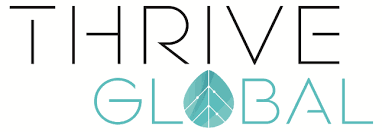I was happy to share my story with Longevity Technology. We spoke about why I started to invest in technology, what my investment strategy is, and how I asses risks when choosing a life extension-focused companies to invest. Enjoy the read:
Longevity.Technology: We often find people have a lot of different answers to this question: What drove you to invest in longevity?
Sergey Young: Like you say, for me it was also a number of different reasons, which led me to set up Longevity Vision Fund and invest in longevity. It all started with a routine visit to a doctor, where my blood tests – which I neglected for 7 years, thinking I was in perfect health – showed that my cholesterol was very high, which put me at risk of heart disease.
The only treatment offered by my doctor at the time was to take statins (cholesterol-reducing drugs), which I would have to take for the rest of my life. I definitely did not want to “live” on a pill forever, so I kept pushing my doctor for alternatives. Eventually, the doctor suggested I try a Mediterranean-style diet (lots of healthy fats, no sugar, etc.), which worked in bringing my cholesterol down to a normal range without any medication at all. Since then, I developed an interest in diet and a lifestyle-based approach to health and longevity, and started consulting everyone – from my amazing housekeeping lady to Forbes billionaires.
However, it was the meeting with Peter Diamandis last year in Vatican City at a conference on regenerative medicine, which was also attended by the Pope, that really kickstarted my longevity mission. Peter is a very inspiring individual, and his XPRIZE Foundation served as a great example of how you can make a difference on a large scale. This is where my mission to expand healthy lifespans of 1 billion people was born, which inspired the establishment of the $100M Longevity Vision Fund to fund longevity breakthroughs and make them affordable and accessible to as many people around the world as possible.
Longevity.Technology: There so many things that make longevity investment risky. Not only is it subject to all of the translational risks seen in more traditional biotech investing, but we’re also so early on in the game that it's hard to tell if any of it will live up to its promise. Let’s say I’m a nervous first-time investor in longevity – you run one of the biggest funds in this space, give me some tips on how you assess risk.
Sergey Young: Longevity is a new and exciting field, which does bring certain risks – but at the same time, the potential is unmatched. We are currently undergoing a massive Longevity Revolution, where how medicine is practiced, drugs are developed, is changing. Tech giants are becoming our new healthcare providers. Medicine is becoming more personalized.
I am often invited to speak at longevity and private wealth conferences, where investors ask me the same question. I start by explaining my personal “3 Horizons” framework to help map the longevity space:
- Horizon 1: technology currently available that has the potential to expand our lifespans to 100 years, such as DIY diagnostics, wearables, digital healthcare delivery, medical software & apps
- Horizon 2: emerging technology with the potential to expand our lifespans to 150 years, such as genome therapy & editing, stem cell therapy, nano-robots, AI-based diagnostics & drug discovery, smart hospitals
- Horizon 3: age reversal, brain-computer integration, avatars, Internet of the Body
We invest across all three Horizons, but new investors may want to focus on the first two: early diagnostics, AI in healthcare, life extension technologies in general, and therapies addressing age-related diseases. As for dealing with investment risks, it is really important to have access to the scientific and medical expertise in this field, because scientific due diligence is a key part of the investment decision-making. At Longevity Vision Fund, we have an enviable team of medical and investment professionals, as well as a Scientific Advisory Board of world-class academics.





